Accepted Scientific Name: Echinopsis glaucina H.Friedrich & G.D.Rowley
I.O.S. Bull. 3(3): 95 (1974), nom. nov. [not Echinopsis glauca (F. Ritter) H.Friedrich & G.D.Rowley]
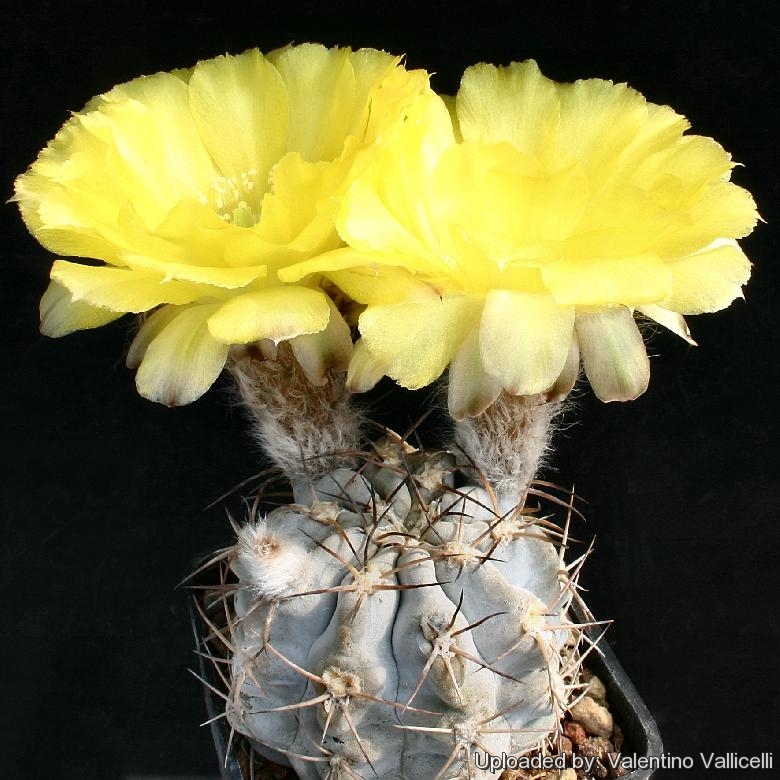
Acanthocalycium glaucum (Echinopsis glaucina) Photo by: Valentino Vallicelli
Origin and Habitat: Belen, Catamarca, Argentina
Synonyms:
See all synonyms of Echinopsis glaucina
back
Accepted name in llifle Database:Echinopsis glaucina H.Friedrich & G.D.RowleyI.O.S. Bull. 3(3): 95 (1974), nom. nov. [not Echinopsis glauca (F. Ritter) H.Friedrich & G.D.Rowley]Synonymy: 7
back
Common Names include:
RUSSIAN (Русский): Акантокалициум сизый
Description: Habit: It is a flat globular to shortly elongated solitary cactus.
Stem: Up to 15 cm tall, 8 cm in diameter; 8-14 rounded ribs; covered by a protective blue-grey layer of pruina.
Radial spines: 5 to 10, dark with a clear base up to 2.5 cm long.
Central spines: Absent (occasionally 1 or 2)
Flower: Yellow or red and yellow flowers in summer, up to 6 cm long and in diameter.
Fruit: Dark green, globose, 2 cm in diameter.
Root: Tuberose root.
Remarks: The plant described as Acanthocalycium aurantiacumSN|27]]SN|27]], now included in this taxon has red flowers with orange centres.
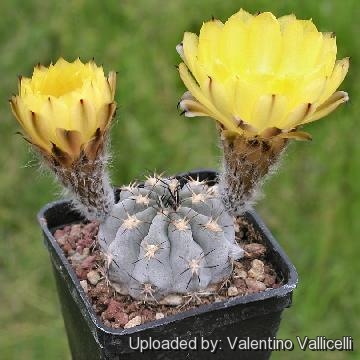 Acanthocalycium glaucum (Echinopsis glaucina) Photo by: Valentino Vallicelli
Acanthocalycium glaucum (Echinopsis glaucina) Photo by: Valentino Vallicelli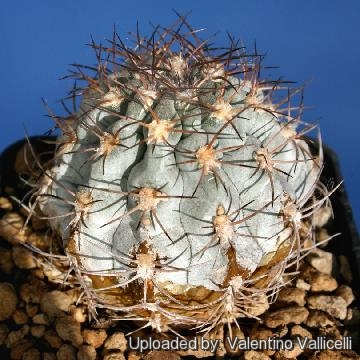 Acanthocalycium glaucum (Echinopsis glaucina) Photo by: Valentino Vallicelli
Acanthocalycium glaucum (Echinopsis glaucina) Photo by: Valentino Vallicelli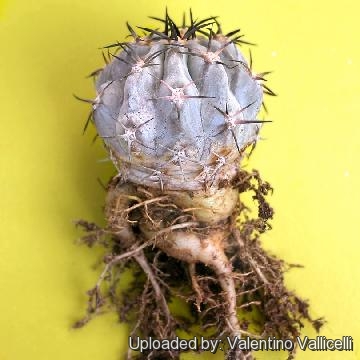 Acanthocalycium glaucum (Echinopsis glaucina) Photo by: Valentino Vallicelli
Acanthocalycium glaucum (Echinopsis glaucina) Photo by: Valentino Vallicelli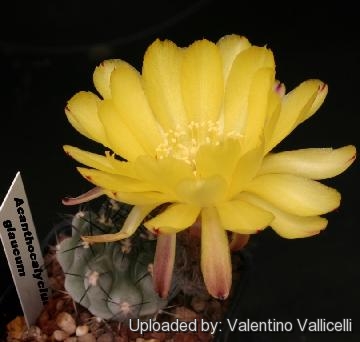 Acanthocalycium glaucum (Echinopsis glaucina) Photo by: Valentino Vallicelli
Acanthocalycium glaucum (Echinopsis glaucina) Photo by: Valentino Vallicelli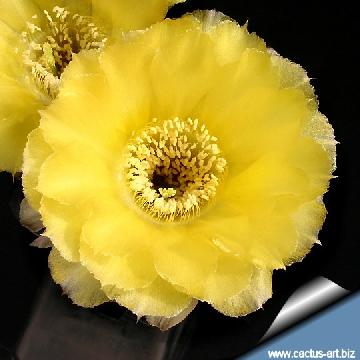 Acanthocalycium glaucum (Echinopsis glaucina) Photo by: Cactus Art
Acanthocalycium glaucum (Echinopsis glaucina) Photo by: Cactus Art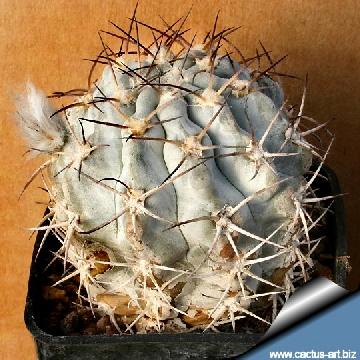 Acanthocalycium glaucum (Echinopsis glaucina) Photo by: Cactus Art
Acanthocalycium glaucum (Echinopsis glaucina) Photo by: Cactus Art Acanthocalycium glaucum (Echinopsis glaucina) Photo by: Cactus Art
Acanthocalycium glaucum (Echinopsis glaucina) Photo by: Cactus Art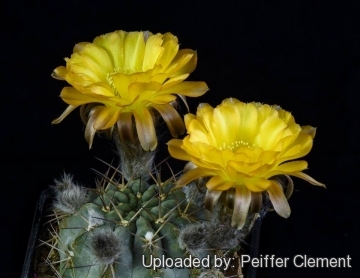 Acanthocalycium glaucum (Echinopsis glaucina) Photo by: Peiffer Clement
Acanthocalycium glaucum (Echinopsis glaucina) Photo by: Peiffer ClementCultivation and Propagation: Acanthocalycium klimpelianumSN|20]]SN|20]] is an easy to grow succulent, more cold tolerant than most and less fussy regarding soil conditions.
Growth rate: It is a relatively rapidly growing and easily flowering species.
Soils: It likes very porous standard cactus mix soil.
Repotting: Use pot with good drainage.
Watering: Water regularly in summer, but do not overwater (Rot prone), keep dry in winter.
Fertilization: Feed with a high potassium fertilizer in summer.
Hardiness: Reputedly somewhat resistant to frost if kept on the dry side prior to, and during, cold weather (hardy to -12 C ° C, or less for short periods).
Exposition: Outside bright sunlight or afternoon shade, inside it needs bright light, and some direct sun, full sun is indispensable to keep plant compact with strong spines.
Uses: It is an excellent plant for container growing. It always looks good and stays small. It look fine in a cold greenhouse and frame or outdoor in a rockery.
Pests & diseases: It may be attractive to a variety of insects, but plants in good condition should be nearly pest-free, particularly if they are grown in a mineral potting-mix, with good exposure and ventilation. Nonetheless, there are several pests to watch for:
- Red spiders: Sensitive to red spider mite. Overhead watering is helpful in controlling mites.
- Mealy bugs: Occasionally mealy bugs they develop aerial into the new growth among the wool with disfiguring results, but the worst types develop underground on the roots and are invisible except by their effects.
- Scales: Scales are rarely a problem.
- Rot: Rot is only a minor problem with cacti if the plants are watered and “aired” correctly. If they are not, fungicides won't help all that much.
Propagation: Direct sow after last frost. Seeds germinate in 7-14 days at 21-27° C in spring, remove gradually the glass cover as soon the plants will be well rooted (ca 1-2 weeks) and keep ventilated, no full sun for young plants!
Your Photos

by Valentino Vallicelli

by Andrea B.

by Cactus Art





















